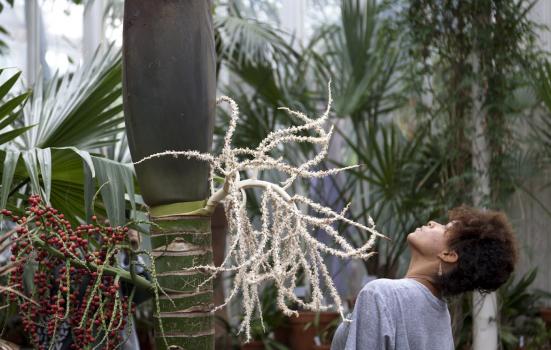Moira Jeffrey writes that the fight to survive is a reality we cannot ignore. Focussing on that alone will lead to “erosion and obsolescence”.

© Attila Urban
As the incoming Director of Scottish Contemporary Art Network (SCAN), the member-led network for connecting and championing the country’s contemporary art community, I’m the rarest of pandemic species in the arts: someone with a new job.
I know how lucky I am when I see my friends and colleagues in culture, many of them artists dealing with cancelled opportunities and collapsing incomes. Others are holding arts organisations together as their funding models, heavily reliant on earned income and diversification, have come crashing down during lockdown.
Grim reading
Since taking up post in January, it has become clear to me the deep personal toll that the pandemic has taken. An independent snapshot survey commissioned with our colleagues at Scottish Artists Union in December and January gave us a picture of our workforce. It wasn’t pretty.
The greatest impact of Covid-19 on most self-employed respondents was reduced income. 65% were facing a loss compared to their pre-Covid expectations. Overall, 22% across the sector estimated they would lose more than half of their expected income in 2020 due to Covid-19. More than a quarter of our respondents said they had “fallen through the cracks” and been ineligible for adequate financial support. But the impact was more than financial: 66% of respondents told us their mental health had worsened because of the pandemic.
SCAN’s 297 members work at the heart of communities from Shetland to the Scottish Borders, from East Lothian to the Western Isles. They include Scotland’s leading galleries, studios, workshops and production facilities, as well as a highly skilled workforce of artists, art workers and creative thinkers. We believe that given the right support and investment our members can be central to the national recovery, bringing new thinking and perspectives to what will be a complex and difficult path.
Strategic cohesion
Last week I was among trade unionists and representative bodies who gave evidence to the Committee on Culture, Tourism, Europe, and External Affairs in the Scottish Parliament. The top line news is that emergency support does work – that’s why we welcome it. But at times it has been incremental, uneven, and lacked strategic cohesion. My biggest concern is the difference between the framework of recovery and that of simple survival. The latter is, of course, the underlying reality, but survival alone should not serve as a policy framework, nor as a funding model. The limited scope of that outlook guarantees not survival, but erosion and obsolescence.
Survival responses rely on job metrics developed for companies with buildings and big permanent workforces. They don’t work for all our members in Scotland, which are charitable organisations of wildly varying scale. Some of them do not have buildings at all, or have small permanent workforces supported by sessional workers and freelancers. We cannot afford to lose or diminish this fundamental infrastructure.
The need to articulate impact must pay heed to what we call ‘invisible redundancies’. This refers to income and opportunity loss: the maker who has turned to universal credit, the self-employed artists who seek work outside the sector, or the zero hours worker working literally zero hours. We must work hard to build a strategic framework for Scotland, and our sense of purpose and belief together. Central to this must be our belief in artists and arts organisations, not as servants of agendas but as drivers of change.
Rebuilding through people
In my own small organisation, we have created a new dedicated role of Artist/Policy Officer in response to the pandemic. This will help us root our work in artists’ needs and understand the unequal impact the pandemic is having within and beyond the cultural sector. The artist Sekai Machache is currently interviewing her peers in grassroots cultural activism to help us understand how, on a micro scale, we can model fast and responsive funding with a focus on equalities. In the spring we’ll launch SCAN Sparks, a seed fund to test our learning.
Artists and dynamic organisations can model new worlds, test propositions, and voice hidden truths. I recently listened to the American composer and performer Meredith Monk describe her own prescient body of work, which anticipated the challenges of the pandemic and climate change, as the result of her “artist’s antenna”. This is neither magic nor mysticism but professional skill – it is the very job description of the artist. This is why art matters and why it is artists, not the gift shop or the foamy cappuccino, that we must place at the heart of rebuilding.
As I write, my members face continuing uncertainty. It is SCAN’s job to help amplify their voices and celebrate their undoubted successes, as well as articulate their concerns. This summer we are hoping for the return of our major festivals and venues, the bi-annual Glasgow International in June and the Edinburgh Art Festival at the end of July. Edinburgh’s Fruitmarket Gallery will re-open later this year with a show by the sculptor Karla Black. Hospitalfield in Arbroath will also open the first phase of their development this spring with a garden by Nigel Dunnett and a new residency programme for artists. At Dundee Contemporary Arts, MaxMara prize-winner Emma Talbot has a new show of autobiographical drawings and paintings, ready and waiting to open as soon as possible. In the meantime, our artists are working where they can as guidance allows. We must continue to place them at the heart of our plans.
Moira Jeffrey is Director of the Scottish Contemporary Art Network (SCAN).
![]() sca-net.org
sca-net.org




